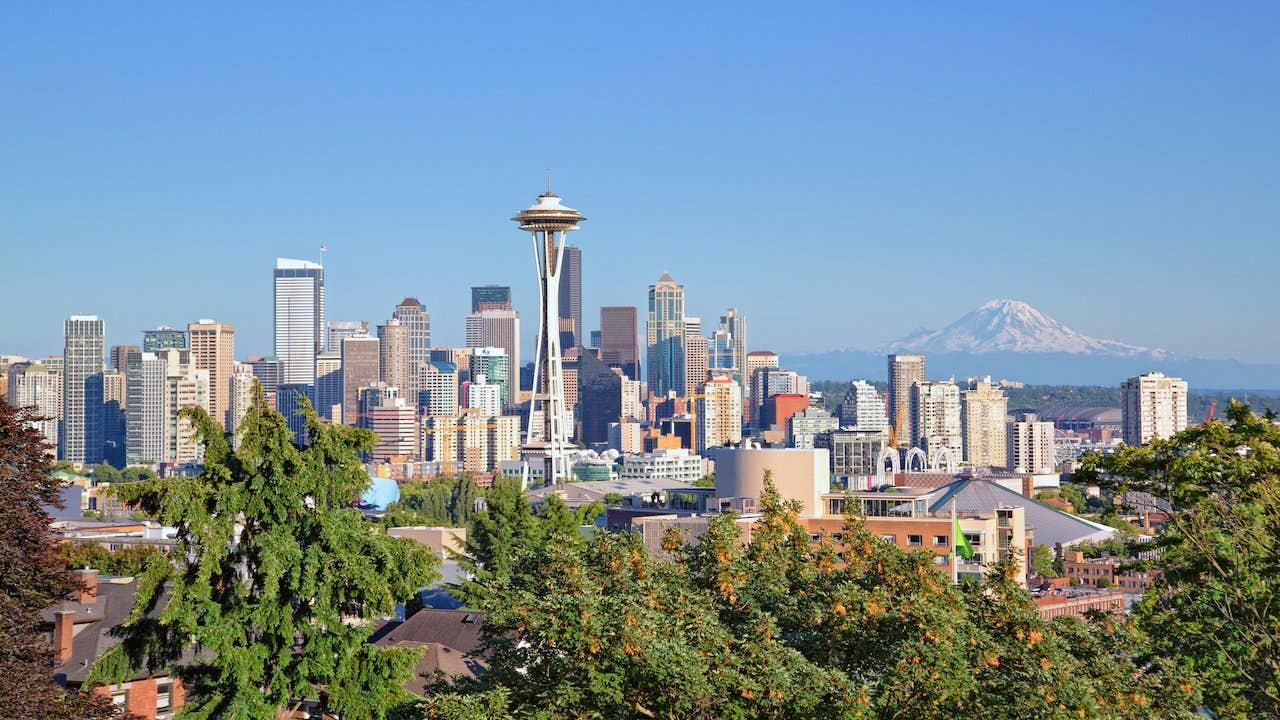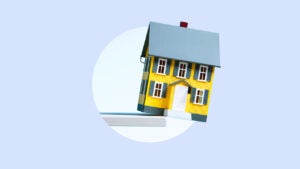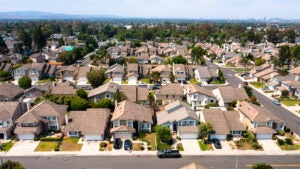2023 Cost of Living in Seattle

Located on the Puget Sound in the Pacific Northwest, the city of Seattle, Washington, is an outdoor enthusiast’s paradise. Its setting offers easy access to water, mountains, skiing and snowboarding and numerous national parks. The area is also home to huge and well-known corporations such as Microsoft, Amazon and Starbucks — a fact that contributes to a booming job market. Seattle is one of the top 15 fastest-growing labor markets in the country.
The region also contains a diverse mix of research universities, colleges and liberal arts schools, including the University of Washington — affectionately known as U-Dub — one of the oldest universities on the West Coast. And recent grads often stick around. In fact, a recent survey conducted by Axios and the Generation Lab found that Seattle is the country’s most desired location for people aged 18 to 24. Here’s a closer look at life in Washington state’s largest city.
Population statistics for Seattle
A multi-faceted city with a great deal to offer, Seattle’s popularity has been growing for years. Here are some key statistics:
- Median household income: $97,185
- Per capita income: $63,610
- Unemployment rate: 2%
- Poverty rate: 10.2%
- Median age: 35.2 years old
The population of the metro Seattle area has been increasing for the past decade. Between 2010 and 2020 — the city’s most significant decade of growth since the 1940s — the metropolitan area’s population increased 21 percent, according to Census Bureau data. The population of metropolitan Seattle is currently about 741,251 people. A great deal of the growth can be attributed to the city’s abundance of employment opportunities. During the past decade, millennials and empty nesters alike relocated to Seattle in droves.
Housing costs in Seattle
Between April 2021 and April 2022, home prices in Seattle increased 10.8 percent to a median of about $885,000, according to data from Redfin — which is itself based in the city. What’s more, homes in this highly competitive market sell in an average of just six days.
Prices in Seattle have been soaring steadily upward for years now, far faster than national price growth trends. Between 2016 and 2021, Redfin data shows that home prices in the city rose by 68 percent, while the national rate was about 45 percent. As a result, Seattle’s cost of living is on the steeper side, and home prices are beyond the means of many buyers.
The annual property tax rate across Washington state is 0.84 percent. It ranks right around the middle nationally, at number 27 out of the 50 states.
Rental costs in Seattle
Like many other places in the country, rent in Seattle has been skyrocketing lately. Between 2021 and 2022, rent prices in the city jumped 29 percent. As a result, Seattle’s average monthly rent now stands at about $2,774. The increases are being driven by the combined factors of demand to live in the city and growth of high-salary jobs in the area.
A one-bedroom apartment in the city rents for about $1,650, while two-bedrooms run more than $2,000. More than half of the dwellings in the city — 53 percent — are renter-occupied households, while 47 percent are owner occupied, according to the rental site Zumper.
Even with such relatively steep prices, renting may still be the better option for recent grads. Seattle is a particularly costly place to buy a home, with 55 percent of owner-occupied homes valued at between $500,000 and $1 million according to Census data.
Job market in Seattle
Seattle is a well-known tech hub, and the city’s biggest employer by far is one of the best-known e-commerce giants in the world: Amazon. Starbucks, another globally recognized brand that needs little introduction, is the second biggest. Other companies rounding out the five top employers in Seattle are retailer Nordstrom, tech company Avanade and Alaska Airlines. Microsoft, another huge tech employer in the area, is located in nearby Redmond, Washington.
| Company | Number of People Employed |
|---|---|
| Amazon | 647,500 |
| Starbucks | 291,000 |
| Nordstrom | 74,000 |
| Avanade | 30,000 |
| Alaska Airlines | 23,156 |
Transportation in Seattle
Seattle has a lot of features that make it attractive, but commuting is not necessarily one of them. The average person in Seattle spends about 28 minutes commuting to work, according to the Census Bureau. About 43 percent of Seattle residents commute alone by car, and the freeways tend to be crowded. Just 7 percent carpool.
Public transportation in Seattle is used by about 21 percent of the population. The city offers a variety of options, such as buses and rail lines, including a streetcar system and a monorail. It’s also a bike- and scooter-friendly city. There are many services that offer rentals, including Lime, Wheels and Spin.
What to do in Seattle
There’s plenty to do in this dynamic city, with iconic attractions, hip urban neighborhoods and stunning natural beauty. Sports fans are in luck also, as the city has an enthusiastic sports culture and is home to major league teams like football’s Seahawks, baseball’s Mariners and hockey’s Kraken. You will have to plan accordingly based on the notorious Seattle weather, though: The climate is perennially rainy.
1. Seattle Seahawks games
The NFL’s Seattle Seahawks, a team that dates back to 1976, have developed a legendary following of loyal fans. One of the team’s biggest individual stars, Steve Largent, retired in 1989 as the NFL’s all-time leading receiver. In 2014, the team earned its first Super Bowl championship. The Seahawks play at Lumen Field, which is located right downtown, and the team is owned by the trust of a hometown legend: the late Microsoft co-founder Paul Allen. The stadium is known as one of the loudest in the NFL, and in a nod to Seattle weather, it was constructed with a roof that covers 70 percent of the seats to keep fans dry in the rain. Football fans who hope to attend a game should to be sure to check out the team’s season schedule.
2. Skiing
Thanks to the famous Seattle weather, not to mention its northern location, there’s plenty of skiing and snowboarding within an hour or two of the city. One of the top options for winter fun is Snoqualmie Pass, just 52 miles from downtown. Stevens Pass and Crystal Mountain, both about 80 to 85 miles from the city, are also popular choices.
3. Seattle Mariners games
The city’s baseball team, the Seattle Mariners, compete in the American League West division of the MLB. The Mariners were established in 1977 and play at T-Mobile Park, which is located in Seattle’s South of Downtown Neighborhood, known as SoDo — right next to the Seahawks’ stadium.
4. Seattle Kraken games
Rounding out the city’s three major sports teams, the Seattle Kraken represent the city in the National Hockey League. This relatively new expansion team plays at the new Climate Pledge Arena, which has ambitious sustainability goals and is also home to the WNBA’s Seattle Storm.
5. Pike Place Market
Easily one of the city’s best known attractions — you’ve surely seen images of the famous throws at the fish market — Pike Place Market includes a food hall, a farmers’ market and an abundance of shopping. Also part of this iconic complex? The very first, original Starbucks location, which is as well-known for its long lines of photo-snapping tourists as it is for its coffee.
6. Space Needle
Constructed for the 1962 World Fair, Seattle’s Space Needle is one of the most famous landmarks in the world. Visitors can explore the 605-foot-high observation deck, which is shaped like a saucer, and offers 360-degree views of the entire city, including Mount Rainier, the Puget Sound and more.
7. Chihuly Garden and Glass
Located close to the Space Needle, this beautiful indoor-outdoor art complex features galleries, a glasshouse, gardens and more that showcase the works of legendary glass artist Dale Chihuly.
8. Olympic Sculpture Park
Yet another stop for art lovers, the nine-acre Olympic Sculpture Park is an outdoor display of modern and contemporary sculpture in a waterfront setting. Entrance is free.
9. Seattle Aquarium
A great option to experience the marine life of the Pacific Northwest. The aquarium also works to preserve the marine animals living in the Puget Sound and the greater surrounding area.
10. Museum of Pop Culture
Established by late Microsoft co-founder Paul Allen, and still chaired by his sister, Jody Allen, the museum showcases an immense collection of pop culture items. Categories represented include hometown musical heroes like Jimi Hendrix, Nirvana and Pearl Jam, as well as science fiction, fantasy and more.
Want even more ideas for what to see and do in Seattle? Check out the Visit Seattle website. And don’t forget that the city is relatively close to two other great West Coast cities with plenty to do and see: Portland, Oregon and Vancouver, Canada.
How to move to Seattle
Before moving to Seattle, explore its neighborhoods and get to know your options. There are areas for those who enjoy nightlife, and those looking for a peaceful place to settle down. Some neighborhoods may be better suited for those looking for a car-free life, while others are known for being family-friendly — particularly Greenwood, Magnolia and West Seattle. Whether you plan to rent or buy a home will also factor heavily into your choice of neighborhood.
Another topic to consider when preparing to relocate is local healthcare options. Seattle earns high marks in this category, being home to several top medical centers. These include respected leaders like UW Medicine, the Polyclinic and Virginia Mason.
If you plan to bring a vehicle to Seattle with you, know that you must register your car within 30 days of moving, and you must get a Washington driver’s license as well. These tasks can be handled by mail or at a Department of Licensing office. A newly issued Washington drivers license will cost you $89.
FAQ
-
Seattle is in the Pacific Standard Time zone and observes Daylight Savings Time.
-
Seattle is the largest city in Washington state, in the Pacific Northwest on America’s West Coast. It is in King County. The city is about 83.9 square miles and sits on the eastern shore of Puget Sound, about 113 miles south of the Canadian border. The greater Seattle region also includes such cities as Redmond, Bellevue and Tacoma.
-
The city of Seattle is famous for many things, including its coffee culture, its natural beauty and its iconic attractions, like the Space Needle and Pike Place Market. It also has a reputation for its rainy weather. In addition, Seattle enjoys wide musical acclaim as the birthplace of grunge music — and of Jimi Hendrix.
-
Seattle contains a variety of vibrant neighborhoods, some known for nightlife and others for arts, culture, live music, dining and more. Where you stay depends on what you want to see and do most. The Capitol Hill area offers nightlife, but also plenty to do during the day for culture lovers. Fremont, meanwhile, is known as one of the city’s most fun neighborhoods and is a compact, easily walkable area to stay in. Downtown is the heart of the action, though, and it contains most of the top tourist sites.
-
Portland, Oregon, is about 178 miles from Seattle, making it just under a three-hour drive.
-
Seattle’s reputation for being a rainy destination precedes it. The city experiences an average of 152 days of rain each year. That’s more than most other cities in the country. However, in terms of actual inches of rainfall, Seattle is not nearly the rainiest city in the country. New York, Atlanta and Miami, for example, all receive more measurable rain per year than Seattle does.
Bottom line
Seattle is a dynamic city offering something for just about everyone, including stunning outdoor activities, a vibrant urban culture and an abundance of employment opportunities. As such, the city continues to attract a steady stream of transplants.
And that popularity is exactly what is driving up the cost of living in Seattle. There’s no sign that the trend is likely to change anytime soon: By 2035, data site PopulationStat expects the population of the Seattle area to grow to nearly 4 million people.
Why we ask for feedback Your feedback helps us improve our content and services. It takes less than a minute to complete.
Your responses are anonymous and will only be used for improving our website.
You may also like

Home insurance isn’t just more expensive, it’s also harder to get in 2025





